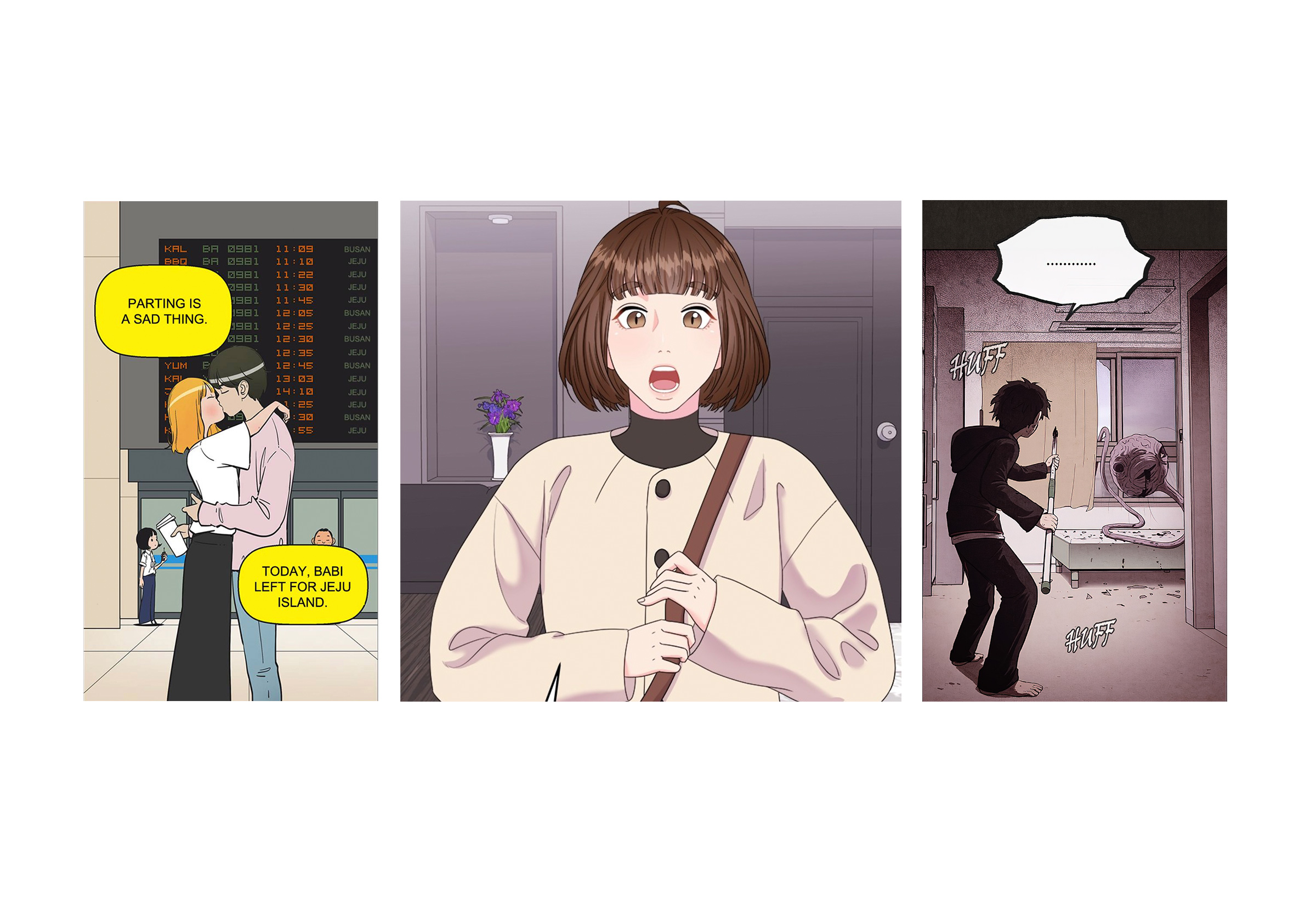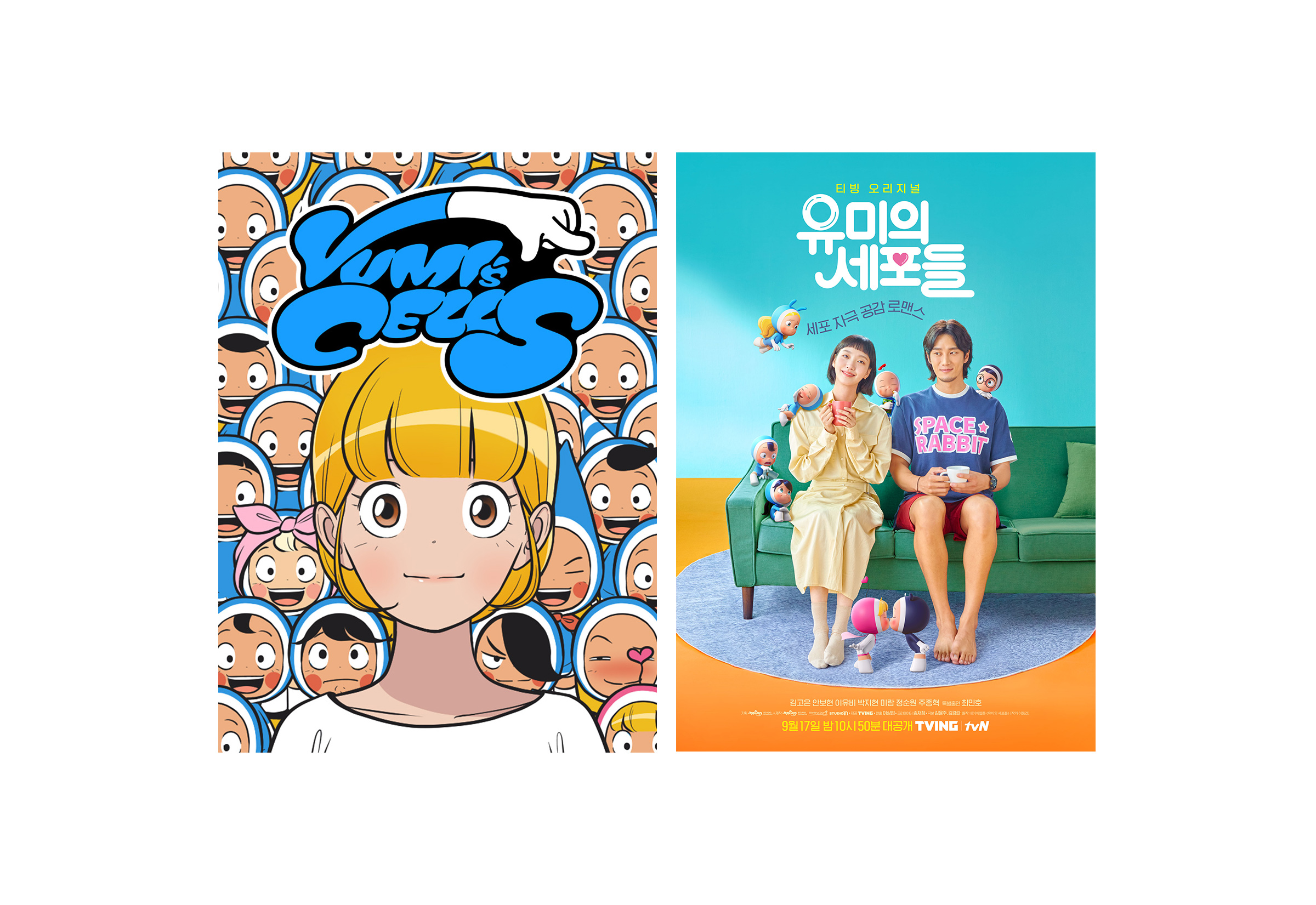
South Korea has left an indelible mark on the global zeitgeist with critically acclaimed films such as Parasite and Decision to Leave, blockbuster K-dramas like Squid Game and Extraordinary Attorney Woo, K-pop sensations like BTS and Blackpink, and ongoing contributions to the world of e-sports, which it pioneered back in the 1990’s. But its outsized impact on pop culture—which has been decades in the making—doesn’t stop there. Media and entertainment executives on both sides of the Pacific are increasingly turning their attention to another Korean cultural phenomenon that is capturing audiences across the globe: webtoons.
Webtoons—a portmanteau of “web” and “cartoon”—are a type of digital comics optimized to be read on mobile devices. In most cases, readers view webtoons from top to bottom by scrolling vertically on their phones, though there are a few exceptions that use the more traditional horizontal format. Since the mid-2010’s, webtoons have become some of the most sought-after source material for hit K-dramas, like Kingdom, Sweet Home, Hellbound, D.P., Itaewon Class, True Beauty, All of Us Are Dead, Business Proposal, Misaeng: Incomplete Life, Yumi’s Cells, and countless others. To date, almost all webtoon-based K-dramas have been made available to international audiences primarily through Netflix or Viki—and other streaming platforms are looking to catch up. Disney+, for instance, has released Kiss Sixth Sense and The Golden Spoon in select regions, with Moving set to premiere next year. Apple TV+’s first Korean-language show, Dr. Brain, was adapted from a webtoon. Amazon Prime Video is also getting into the game with Island, a fantasy thriller about a motley crew fighting to save the world from dark forces. Based on a popular webtoon of the same name by Youn In-wan and Yang Kyung-il, the highly anticipated K-drama starring Kim Nam-gil, Lee Da-hee and Cha Eun-woo launched globally this week.
As webtoons continue to inspire K-dramas, here’s what to know about the digital comics, how they grew in influence, and why creators look to them for story ideas.

The history of webtoons and how they took over the Internet
The first webtoons appeared in the late 1990’s when individual creators uploaded their comics to their personal webpages and a handful of newspapers included cartoons on their sites, says Dal Yong Jin, author of Understanding Korean Webtoon Culture: Transmedia Storytelling, Digital Platforms, and Genres. Webtoons began gaining traction with the Korean general public in 2000 when Chollian, a now-defunct internet service provider, launched its own webtoons portal. Internet giants Daum (now part of Kakao) and Naver quickly followed suit and established their own webtoon platforms in 2003 and 2004, respectively, further popularizing the art form throughout South Korea.
Today there are dozens of webtoon publishers around the world, with most of the major ones based in Korea. WEBTOON (known as Naver WEBTOON in Korea), is by far the largest and best-known, with roughly 89 million monthly active users worldwide. About 75% of its readers are Gen Z and younger Millennials, and 60% are women—audiences that have been historically underserved by traditional comic book publishers. For WEBTOON, however, they have become a key factor behind its recent exponential growth. “Most of the webtoons are relatable to me on a personal level,” says Liliana Rosas, a California-based machine operator who fits that demographic. “When I have long days, a good update or a new webtoon gives me the feels or a good laugh.”
Webtoons span a variety of genres, from horror to comedy to slice of life and everything in between, though a recent study by the Korea Creative Content Agency found that fantasy romance is the most popular. Regardless of the genre, experts, industry insiders and readers alike seem to agree that one of the most appealing features of webtoons is their accessibility. Anyone with a mobile device can download one of the webtoon apps and gain instant access to a vast selection of content—much of which is free. “I like webtoons because it’s easy to pick up my phone and open the app whenever,” says Raksa Nhoung, a college student in Oregon. “Having webtoons that update weekly helps keep me entertained during my breaks at school or at home.”
The webtoon’s easily digestible format has fueled its ever-increasing popularity in today’s “snack culture,” a term used in South Korea to denote the modern trend of consuming media in short periods of time. “Korea developed this new speedy snack culture partly due to the convergence of an emerging cultural genre and smartphones,” says Jin. “People’s daily activities are reliant on smartphones, and cultural content providers have released webtoons short enough to be viewed in under 10 minutes on mobile devices.”
David Lee, VP of content at WEBTOON, points out that this ease of access applies not only to readers, but to creators, too. WEBTOON, for instance, runs an open platform called Canvas where creators can instantly upload their comics for millions of readers to enjoy. Creators get paid through an ad revenue-sharing program (and—for those lucky enough to be selected for WEBTOON’s Originals section—through additional monetization channels).
Why webtoons make great TV

The sheer proportion of webtoon-inspired K-dramas that have gone on to garner global success is staggering. For example, some of the biggest shows on Viki, one of the world’s leading streaming services for watching Asian content, have originated from webtoons. According to Sarah Kim, Viki’s chief content officer, many of its licensed webtoon-based titles, including True Beauty; Yumi’s Cells; What’s Wrong with Secretary Kim; My ID Is Gangnam Beauty; So I Married the Anti-Fan; Meow, the Secret Boy; My Roommate Is a Gumiho; Clean with Passion For Now; and The Tale of Nokdu, all ranked in the platform’s global Top 10 list of TV shows throughout their run, with some reaching number one.
K-drama adaptations of webtoons have been a boon for local Korean streamers too. TVING, a leading OTT service in Korea, saw its subscriber base surge when it released Yumi’s Cells, a coming-of-age romance about a 30-something office employee whose daily life is partly recounted from the perspective of her brain cells (think Inside Out, but with cuter cartoon characters). “A lot of people became paid users [on TVING] because they wanted to see Yumi’s Cells,” says Seungyun Ro, the IP business team leader at Naver WEBTOON, which published the original webtoon by Lee Dong-geon. “So a lot of OTTs are showing great interest [in webtoons] these days.”
According to Ro, about 30 of Naver’s webtoons were adapted into K-dramas between 2020 and 2022, and that number is only expected to grow. “We have a lot of works that are under contract, and only a small portion of them have been adapted,” he says. “But there’s a long list coming in the future.”
So why are so many of the most popular K-dramas adapted from webtoons? And what about webtoons makes them such a reliable wellspring of inspiration? Song Jae-jung, the head screenwriter of the TV version of Yumi’s Cells, says, “As the number of platforms increased, the demand for content also increased, but there were only so many shows that could be made based on original screenplays. To create more shows, many production companies started turning to the webtoon industry, which already had a lot of original works that were readily adaptable into TV series.”
She adds that as K-dramas grew in popularity and began targeting global audiences, many creators became more risk-averse. “As production costs increased and casting A-list actors became more important, K-drama screenwriters leaned into safer and more universal stories, while the webtoon industry kept embracing fresh and adventurous stories,” says Song. “Given that more and more young, creative writers were venturing into webtoons, TV executives began looking into the webtoon space for ideas and talent.”
For local TV and cable channels as well as domestic and global streamers constantly on the hunt for new material that will satisfy their viewers, webtoons provide a seemingly endless supply of stories that are beloved by many fans around the world. “The materials are just infinite,” says Ro. “They’re already proven in terms of popularity and quality within the platform.”
Webtoons have been a valuable source of IP for more than K-dramas. Korean movies like Inside Men; Secretly, Greatly; and the blockbuster film franchise Along with the Gods are all based on webtoons. Tower of God, Noblesse, The God of High School, and Lookism were each turned into an animated series, with the last one even ranking in Netflix’s Global Top 10 list of non-English-language shows. Money Game, a thriller webtoon in which eight contestants compete for $38 million in prize money, was developed into a YouTube series in Korea last year and later became the first Korean webtoon to be adapted into an American reality show.
The webtoon adaptation craze is not just limited to Korean-language content. For example, an animated version of Rachel Smythe’s wildly popular webtoon Lore Olympus is currently being produced by The Jim Henson Company and Wattpad WEBTOON Studios, formed last year through the merger of Wattpad’s and WEBTOON’s studio divisions. And the Netflix smash hit Heartstopper is actually a screen adaptation of Alice Oseman’s webtoon and graphic novel. Though the earliest webtoon creators may have all been Korean, these days plenty of successful webtoon artists and writers hail from other countries, proving that great stories—regardless of their geographical origin—have the potential to resonate with audiences globally.
A reverse trend of popular TV shows being adapted into webtoons is also emerging, with a few notable examples being Good Doctor, Extraordinary Attorney Woo and She Would Never Know. “These K-dramas were a hit, so the audiences’ demand to experience these dramas again was channeled into webtoons,” notes Ro, adding that since webtoons are a medium and a platform that anyone can easily access, “it’s not just K-dramas that are being adapted into webtoons, but other types of media that are also being turned into webtoons. And I predict that these types of trends will continue in the future.”
Major entertainment players in Korea—and increasingly, other countries as well—are beginning to build entire ecosystems of webtoons, graphic novels, TV shows, films and other types of content around a single story idea—what is often referred to as “transmedia storytelling.” Ro explains that such crossovers in terms of format and genre are no longer a new phenomenon in the industry. “A single successful story can now be retold through diverse methods,” he says.
As more creatives and showbiz execs around the world take notice of webtoons, they’re discovering that this booming art form is affording them boundless opportunities in transmedia storytelling. “Webtoons are the next, even current, frontier in the global cultural industries,” says Jin. “There is no doubt that webtoons will continue to grow as the major constituent of Korean cultural industries and youth culture, and eventually in the global cultural scene.”
For those who haven’t yet tuned into the webtoon revolution, it will be only a matter of time.
Regina Kim is a freelance entertainment writer focusing on Korean pop culture. Her articles have appeared in Vanity Fair, The Washington Post, ELLE, Rolling Stone, NBC News, Entertainment Weekly, Vulture, MTV News and more. You can find some of her writings at reginakim.com.
More Must-Reads from TIME
- Why Biden Dropped Out
- Ukraine’s Plan to Survive Trump
- The Rise of a New Kind of Parenting Guru
- The Chaos and Commotion of the RNC in Photos
- Why We All Have a Stake in Twisters’ Success
- 8 Eating Habits That Actually Improve Your Sleep
- Welcome to the Noah Lyles Olympics
- Get Our Paris Olympics Newsletter in Your Inbox
Contact us at letters@time.com